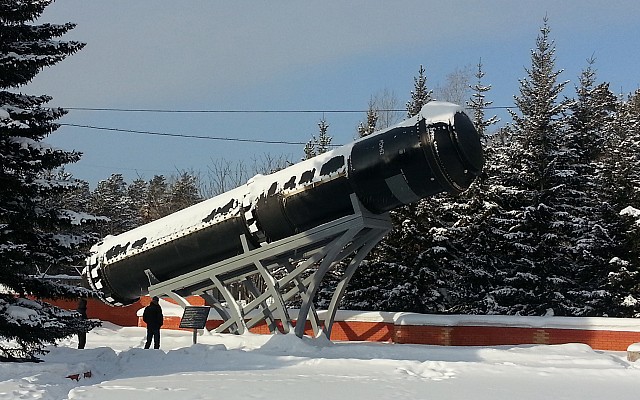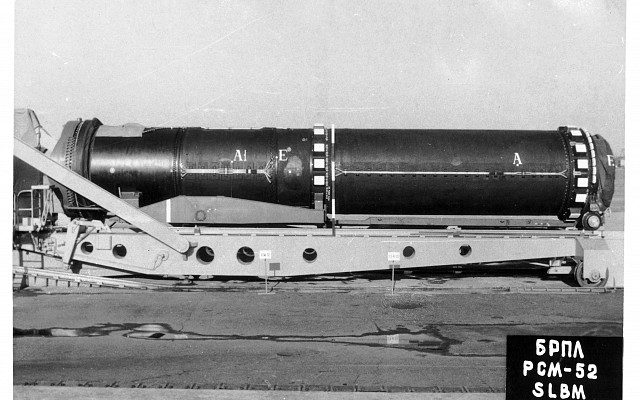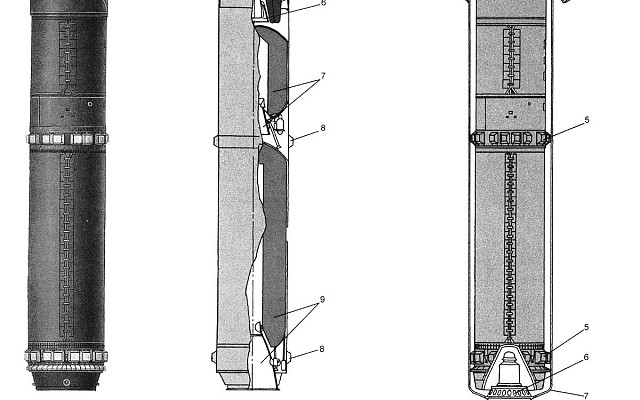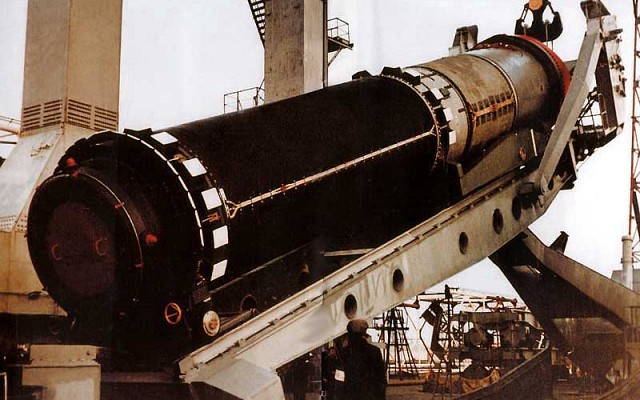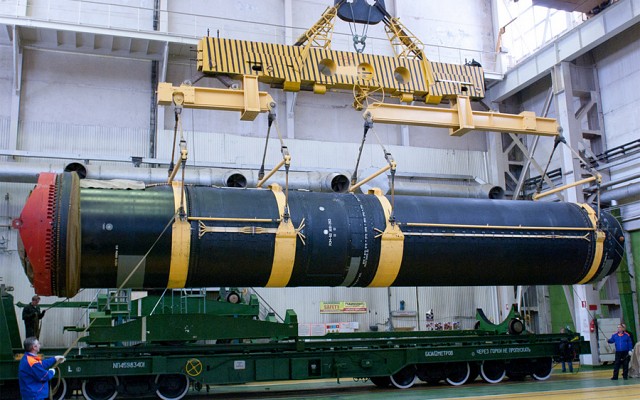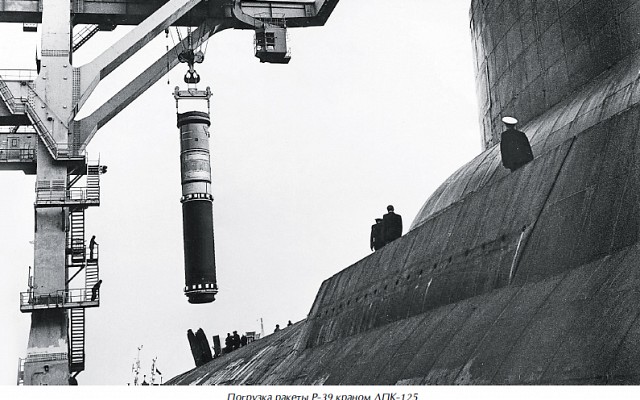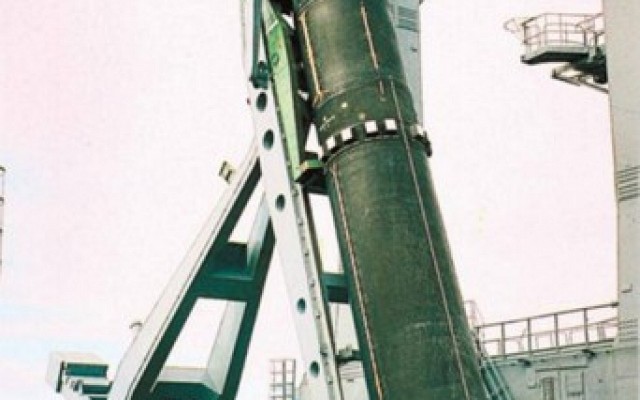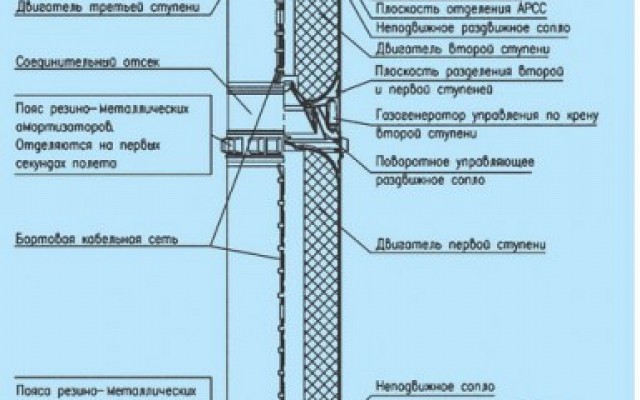R-39 Rif
NATO: SS-N-20 Sturgeon
Overview
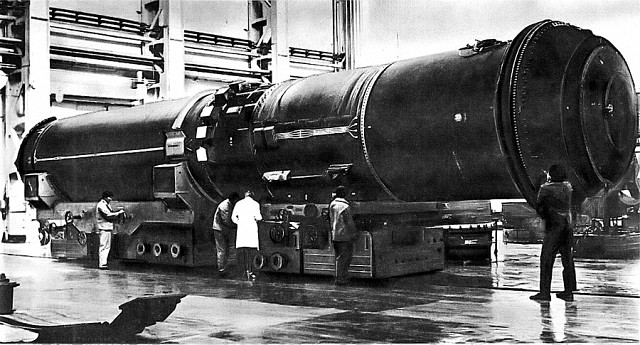
R-39 Rif
R-39 Rif launch container.
Source: Unknown author -
© Copyright lies with original owner
1979 (first launch)
151 series production missiles
RSM-52 (START index)
3M65 (GRAU index)
Russia - Navy
Description
Introduction
The R-39 Rif is a late Cold War era submarine launched ballistic missile of Soviet origin. The R-39 is the largest SLBM ever produced and armed the Project 941 Akula (NATO: Typhoon) class ballistic missile submarines. The R-39 has an intercontinental range and high throw weight. By the mid 2000's all of these missiles were out of service. The R-39M Grom was to be the successor, but
Design
The R-39 is a large and heavy missile that consists of three solid fuel stages. The warhead section and course correction thrusters are liquid fueled. The warhead section uses astroinertial guidance to aim and launch each of its 10 multiple independently targetable reentry vehicles. The R-39U Rif-U became operational in 1988/89 and launches its MIRVs with higher precision. The D-19 launch protects the R-39 missile within the Project 941 submarine. Within the launch system the R-39 has a gas booster at the bottom for missile ejection. Upon launch a gas generator is used to create a temporary cavity in the water for easier launch when submerged.
Firepower
The R-39 has a warhead section with up to 10 MIRVs. Each MIRV has a thermonuclear warhead with a yield of 100 to 200 kT. Accuracy of each MIRV is reported as having a CEP of 340 to 500 meters. The maximum range of the R-39 is 8.300 km with maximum payload. R-39 missiles can be launched while the Project 941 submarine is submerged and travelling at low speed.
Launch platform
The R-39 Rif is used on the Project 941 Akula ballistic missile submarine. The Project 941 is the largest class of submarines ever produced. These were known in the West under the NATO reporting name Typhoon. Six of these giant submarines were produced and 20 R-39 missiles were carried per submarine. At peak operational level a total of 120 missiles with a staggering amount of 1.200 nuclear warheads were operational. The last Project 941 with R-39 missiles was decommissioned in 2004. By 2012 the last R-39 missiles were destroyed.
